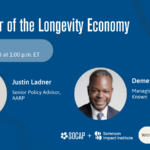Digital transformation has far surpassed the world of technology, deeply impacting our lifestyles, work, and relationships. Today, accelerated societal change and transformation is a permanent state, given the exponential technological advancements we’ll experience in the coming years. There is now widespread awareness in companies of the need to adapt to, and even anticipate, change. Business reinvention, “omnichannel” marketing, and direct real-time connections with customers are now at the heart of companies’ concerns and monopolize all efforts. “The brand,” an obsession for previous decades, now seems out of fashion and static, when everything in business must be in constant motion.
The digital revolution has transformed far more than technology; it has changed individuals’ deepest aspirations by giving them much more ability to act in the world. This takeover affects the entire social field — that of consumerism but also that of work and citizenship — with the individual becoming aware of his power as an economic actor.
This empowerment has significantly increased demand on companies and brands in terms of use value and ecological and human impact. The negative externalities of overconsumption and globalization, with regard to resource depletion and global warming, cast doubt on the ability of companies to continue offering the promise of “better living.” The quest for meaning in consumerism and work spreads beyond generations Y and Z. Seventy-five percent of Millennials believe that companies are more invested in their interests than societal issues, and 48 percent think that they do not do business ethically (source: Deloitte 2018). Transparency becomes a new imperative in the era of doubt and checking, where we have the means to access detailed information on the impacts of our consumption. In this context, contrary to what one might think, the brand is more necessary than ever — if it can be reimagined.
What if the kingpin of a company’s transformation is its brand?
Branding must return to its roots, that of creating meaning. It then becomes a tremendous lever, overcoming deep ruptures, that adapts and transforms an organization. By giving direction (meaning) but also significance (of meaning), the company can build and share a common purpose that binds its stakeholders, customers, and employees. The brand becomes performative and programmatic.
According to a study conducted by EY and Harvard Business Review Analytics, companies that develop a strong awareness of what constitutes their purpose beyond economic profit create a greater coherence between their actions and their identity — and pay greater attention to the experience they offer their customers, employees, and investors. They emotionally engage their stakeholders during their transformation. According to this study, in companies that pursue this ambition, employees are 1.4 times more committed, 1.7 times more satisfied, and 3 times more likely to pursue their career. Eighty-nine percent of customers consider their products and services to be better, and 72 percent are willing to recommend them. Lastly, stock market performance is 10 times higher than that of companies that do not apply this principle.
The scope of the brand must broaden and consolidate what brings together and motivates a community of individuals (the organization), and enables it to positively position itself with other communities, its customers, investors, and the collective bodies of the environment in which it operates. Its value must not only be measured by the yardstick of its profitability but by its contribution to individual and its collective benefits that meet the great aspirations and problems of our world today.
We must now think of branding no longer as an advertising artifact but as an interface, a membrane of permanent exchange between an organization’s inside and outside, to allow for value creation. In other words, branding today must be considered as an experience co-built by an organization and its stakeholders around an intelligible and meaningful mission for all.
“Branding today must be considered as an experience co-built by an organization and its stakeholders around an intelligible and meaningful mission for all.”
Brand management must be redesigned.
This ambition calls for new performance indicators and management methods. Traditional indicators, awareness, image attributes, and NPS no longer suffice. They are a reflection of the old model.
In the digital age, brands are built from the inside out, with employees being the first custodians. Does the brand embody a clear and identifiable project for them, beyond its profitability? Is it motivating and does it meet their aspirations? Is the organization able to adapt, respond, and interact fluidly and positively with external communities, clients, and other stakeholders?
Silos between employer brand, corporate brand, and commercial brand have collapsed. The brand, and the meaning it embodies and surrounds, is the central focus that enables employees to create more value for customers and other stakeholders.
The brand, as relational interface, can be built around new objectives:
- authenticity of the relationship and experience, namely the ability of the brand to match its intrinsic reality, the concrete experience it offers, and what can be perceived particularly via its communication, is fundamental in this time of “fact checking.”
- societal relevance, i.e., its ability to bring real added value to stakeholders. The difficulty lies in defining this relevance by considering not only the individual benefits provided but also the negative externalities.
- coherence of meaning: the splintering of touch points and real-time animation of the relationship, intrinsic to digitization, come with the dilution of meaning. The challenge is to encourage and facilitate rich interactions while managing a centripetal ecosystem. Clarify meaning; don’t dilute it.
- quality of presence: being accessible, visible, and intelligible only where the brand interaction can be of value for stakeholders.
- sincerity of engagement: Does the brand offer a motivating project able to create individual and collective value? Does its way of interacting with stakeholders match what they expect? Do its clients feel respected? Do they share values, common points of view? Engagement limited to entertainment alone (brand entertainment) is not enough. If the connection to contemporary culture is necessary to contextualize, the challenge is above all to crystallize meaning.
Beyond the performance indicators, brand management must be redesigned. The reinvented brand no longer caters to just one function, marketing or communication. It becomes a central asset for the company, and it’s human and economic transformation. It is at the heart of innovation, omnichannel customer experience, human resources, social media, and corporate communication far beyond mere commercial communication, in which it is still too generally confined. Teams operating in different areas of expertise (with objectives that are sometimes incompatible) are supplemented by external service providers, and all have an impact on the brand. How does one avoid diluting meaning and recreating artifacts? How do you manage the co-production of the brand?
Brand reinvention no longer lies solely with the company; it belongs to the customer and the citizen. They are the engines of transformation, the brand its vehicle for it to be effective. Opening and encouraging dialogue with customers allows the brand and the organization to be constantly learning (outside-in) to nourish its value propositions and promote positive connections(inside-out). These can then be co-constructed in an evolutionary way, articulating three dimensions: individual utility (response to a need), societal utility (meaning and impact), and situational utility (management of positive interactions). It is an approach that aims at considering the individual in his entirety, giving the search for common interests its proper place so that the brand is not only synonymous with marketing but with an economic project that focuses on the human.
Reinventing the brand around these principles is a challenge, but it’s worth the effort.





